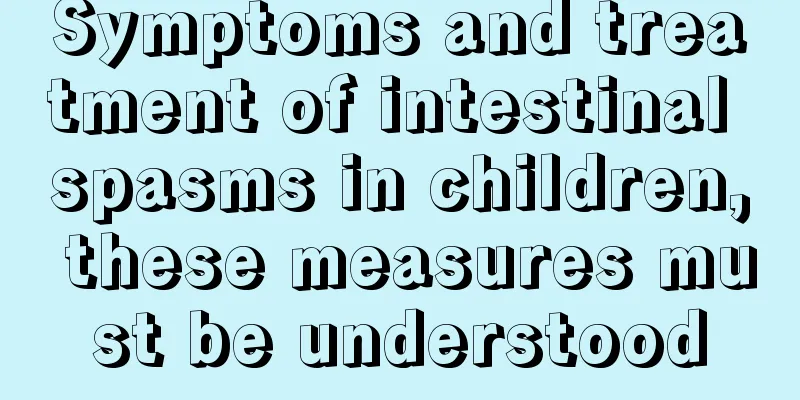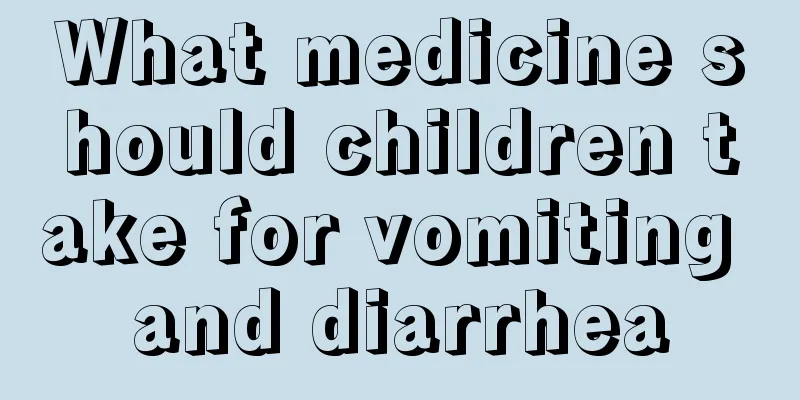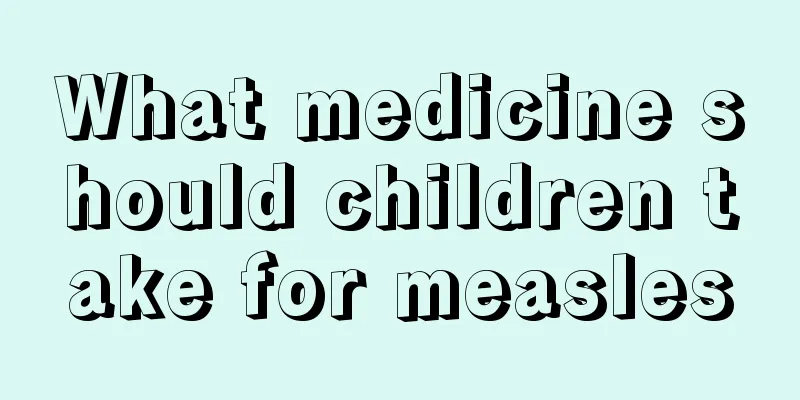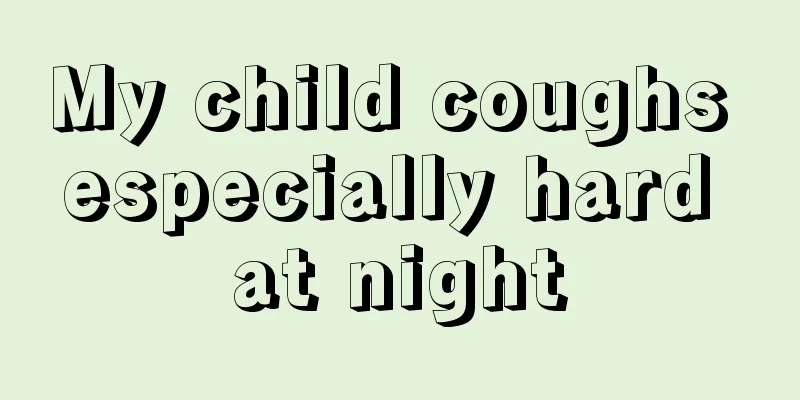Symptoms and treatment of intestinal spasms in children, these measures must be understood

|
For families with children, it is important to understand how to diagnose and treat some of their children's diseases. For example, for a disease like childhood intestinal spasms, parents should not only know the symptoms of the disease, but also some effective treatments. 1. Symptoms of intestinal spasms in children Intestinal spasm is one of the common symptoms in children. It is paroxysmal abdominal pain caused by strong contraction of the intestinal smooth muscle and is a type of functional abdominal pain in children. Intestinal spasm is characterized by sudden onset of abdominal pain, sometimes causing the child to wake up crying during sleep at night. Each attack does not last long, ranging from a few minutes to tens of minutes, and it occurs from time to time and recurs repeatedly. In some children, the pain may last for several days. The severity of the pain varies. Mild cases will resolve on their own after a few minutes, while severe cases will become pale, have cold hands and feet, cry and be restless, and roll around in sweat. Intestinal spasms often occur in the small intestine, with abdominal pain mainly around the umbilicus, often accompanied by vomiting. There were no abnormal abdominal signs during the intervals between attacks. Infants may experience paroxysmal crying, which may last for hours. This disease may occur from time to time, but the prognosis is good and it will heal itself with age. 2. Causes of intestinal spasms in children The cause of the disease is not yet fully understood, but it is generally recognized that some children are allergic to milk. Common triggers include upper respiratory tract infection, cold abdomen, consuming cold drinks, eating too much or high sugar content in food. Under the influence of the above factors, the intestinal wall muscles spasm, blocking the passage of intestinal contents. As intestinal peristalsis increases, abdominal pain becomes more severe and can cause vomiting. After a certain period of spasm, the muscles relax naturally and the abdominal pain is relieved, but it may recur later. 3. Home care for children with intestinal spasms When intestinal spasm occurs, the child's abdomen likes warmth and pressure. The father or mother can rub the child's abdomen with warm hands or place a warm water bag on the child's abdomen. The symptoms will be relieved after a few minutes. During an intestinal spasm, your baby should be fed easily digestible foods such as noodles or porridge, and should not be allowed to drink cold drinks or carbonated beverages with high sugar content. In traditional Chinese medicine treatment, the method of warming the middle and dispelling cold, promoting qi and relieving pain can be adopted. Help your baby develop good eating habits, such as taking a short rest before eating, not eating in a hurry; not overeating; drinking cold drinks in moderation, and drinking less high-sugar drinks; not doing strenuous exercise after meals; and not eating too much before going to bed. 4. What medicine should children take for intestinal spasms? 1. If the child's abdominal pain only occurs occasionally or infrequently, medication is generally not required. The abdominal pain will often be relieved naturally after a few minutes, ten minutes, or even a few seconds. 3. If all the tests are normal, it can be clearly diagnosed as "primary spastic intestinal disease". Clinical experience shows that this disease usually heals itself naturally with age. |
<<: What is the pimple on the butt?
>>: Symptoms of functional dyspepsia in children: know them early and prevent them early!
Recommend
Tips for removing phlegm from a four-month-old baby
A newborn baby will lose a lot of protection when...
What are the symptoms of severe calcium deficiency in infants?
When an infant shows severe calcium deficiency, p...
How to treat red patches on baby's scalp?
In addition to growing hair, there are many other...
Six most common causes of nosebleeds in children
Nosebleeds in children are a very common phenomen...
The types and characteristics of rash after baby fever
Fever and rash in infants and young children is a...
What to do if your child's gums are swollen and painful
It is quite common for children to have swollen a...
What to do if your baby has a fever and convulsions
It is very common for babies to have fever, but w...
Can children get cataracts?
Cataract patients are generally elderly people, b...
Breastfeeding milk quantity standard table
Breastfeeding is the healthiest and most nutritio...
How to treat white spots on baby's lips
The whiteness of the inside of the baby's lip...
What to do if your child has a lot of phlegm and runny nose
Children of a few years old generally have poor p...
Tuberculosis in children
Diseases such as childhood tuberculosis are actua...
Reasons for sweating on baby's head
Summer is here, and babies will sweat a lot when ...
What to do if your child is sulking
It is very bad for children to sulk, so parents m...
56-day-old baby development standard
Generally speaking, babies grow rapidly every day...









